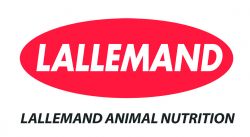
“Forage fermentation analyses are rarely clear cut,” explains Renato Schmidt, Ph.D., Technical Services – Silage, Lallemand Animal Nutrition. “This can make it difficult to take the information and turn it into specific, actionable tasks for the farm.”
Dr. Schmidt advises reviewing the results with three key take-aways in mind:
- Management changes: Fermentation characteristics can point to necessary silage management adjustments.
- Possible feeding challenges: The fermentation profile can provide insight into intake and potential issues.
- Identify performance problems: In some cases, results can help explain poor silage nutritive value and metabolic issues within the herd.
Management changes
Fermentation analysis helps tell the story of silage production from harvest timing to packing density and sealing. Properly ensiled forage creates a predictable pattern of acid production. Breakdowns in management will show up as silage with more variability and less desirable fermentation characteristics.
“If we see silage with a high pH, that can indicate poor fermentation, which can result from slow or poor packing,” he explains. “The forage could have been harvested too dry or have been contaminated with manure. The analysis can point us in the direction, but it’s up to us to find the cause and create a plan of action.”
Incorporating laboratory tests measuring acid detergent fiber (ADF), neutral detergent fiber (NDF) and lignin can help point out additional management changes. For example, ADF, NDF and lignin values should be within average ranges for the type of material harvested. If levels are higher than normal for the crop, it may be a sign the material was more mature than ideal. This can also lead to yeast and mold challenges.
“Starch also is a good indicator of the timing of harvest,” Dr. Schmidt explains. “Ideally, corn silage starch levels should be around 30 percent. For cereal forages, the starch level should be about the same unless it was harvested green. Then, producers could expect to see starch levels as low as 10 to 15 percent.”
Possible feeding challenges
Feed intake can be depressed for a number of reasons. In high-moisture silages, acids, ammonia and other products from protein breakdown can be produced in greater quantities, which can reduce intake.
Silages with high levels of certain acids can indicate poor dry matter (DM) recovery during ensiling. For example, wet silages that have suffered a slow fermentation can contain higher levels of acetic acid, creating a tell-tale vinegar smell. Research has shown acetic acid itself may not be the cause of intake problems.1 For example, well-managed silage treated with forage inoculants containing Lactobacillus buchneri often have higher levels of acetic acid, but intake is not affected.2,3
In fact, acetic acid can benefit silage. It helps inhibit the growth of spoilage yeasts responsible for silage heating. This process is one of the reasons the widely used Biotal® forage inoculants containing the specific strain Lactobacillus buchneri 40788 have been uniquely reviewed by the FDA for improved aerobic stability when applied at 400,000 CFU per gram of forage or 600,000 CFU per gram of high-moisture corn (HMC).
Identify performance problems
Finally, fermentation analysis can provide insight into possible performance problems. High levels of silage acids can indicate an extensive fermentation occurred during ensiling. Many operations can successfully feed silage with a high acid content by balancing the ration appropriately to the silage.
“It’s worthwhile to invest in fermentation analysis — especially if you’re experiencing challenges that are hard to pin down,” Dr. Schmidt advises. “Rations are only as well formulated as the quality of the individual components. Silage is a complex system with inherent variability. In addition to allowing the ration to be properly balanced around the silage, analysis can help us understand what happened during the harvest and ensiling process and help identify how to improve the next time.”
Lallemand Animal Nutrition is committed to optimizing animal performance and well-being with specific natural microbial product and service solutions. Using sound science, proven results and knowledge, Lallemand Animal Nutrition develops, produces and markets high value yeast and bacteria products ─ including probiotics, silage inoculants and yeast derivatives. Lallemand offers a higher level of expertise, leadership and industry commitment with long-term and profitable solutions to move our partners Forward. Lallemand Animal Nutrition is Specific for your success. For more information, please visit www.lallemandanimalnutrition.com.
References:
1 Ward RT and de Ondarza MB. Fermentation Analysis of Silage: Use and Interpretation. January 2000.
2 Kleinschmit DH, Schmidt RJ and Kung, Jr L. The effects of various antifungal additives on the
fermentation and aerobic stability of corn silage. J. Dairy Sci. 2005; 88:2130-2139.
3 Kung, Jr. L., Taylor CC, Lynch MP, and Neylon JM. The effect of treating alfalfa with Lactobacillus
buchneri 40788 on silage fermentation, aerobic stability, and nutritive value for lactating dairy cows. J. Dairy Sci. 2003; 86:336-343.


